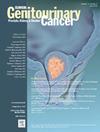Expression and Prognostic Significance of Different Antibody-Drug Conjugate Target Proteins in Urachal Carcinoma
IF 2.7
3区 医学
Q3 ONCOLOGY
引用次数: 0
Abstract
Background
Urachal carcinoma (UrC), a rare malignancy originating from urachal remnants, currently lacks standardized therapeutic options for advanced stages. While antibody-drug conjugate (ADC) therapy has emerged as a transformative approach in oncology, its clinical application in UrC remains investigational due to the paucity of data regarding target antigen expression profiles. This study systematically characterized the immunohistochemical landscape of UrC through the lens of established ADC targets and evaluated their prognostic implications, thereby informing future therapeutic development.
Patients and Methods
We retrospectively analyzed 41 histologically confirmed UrC specimens with complete clinical information. Immunohistochemical evaluation was performed for 6 therapeutic targets: HER2, Nectin-4, Claudin18.2, Trop2, Mesothelin, and PD-L1. Standardized scoring system was used to quantify the level of target expression and to determine the rate of high expression for each target. Survival outcomes were assessed through Kaplan–Meier method and Cox proportional hazards modeling.
Results
With a median follow-up of 99 months, the cohort exhibited a 5-year overall survival (OS) rate of 62.4% (95% CI, 48.5%-80.3%). Analysis of ADC target protein expression showed that Trop2 had the highest rate of high expression (58.5%), followed by Mesothelin (43.9%), Claudin18.2 (34.1%), Nectin-4 (24.4%), HER2 (9.8%), and PD-L1 (4.9%). Survival analysis demonstrated significantly reduced 5-year overall survival (OS) in the Trop2-high group (47.1% vs. 87.5%, P = 0.01). Multivariate Cox regression analysis identified both Trop2 and Sheldon stage as independent prognostic determinants.
Conclusion
Our findings confirm that UrC has the potential to be treated by ADC. Trop2 has the highest high expression rate in UrC and is associated with a worse prognosis, which may be a potential target for ADC therapy for UrC.
不同抗体-药物偶联靶蛋白在尿管癌中的表达及预后意义
研究背景:尿管癌(UrC)是一种罕见的起源于尿管残余物的恶性肿瘤,目前晚期缺乏标准化的治疗方案。虽然抗体-药物偶联(ADC)治疗已成为肿瘤学的一种变革性方法,但由于缺乏有关靶抗原表达谱的数据,其在UrC中的临床应用仍处于研究阶段。本研究通过已建立的ADC靶点系统地描述了UrC的免疫组织化学特征,并评估了它们的预后意义,从而为未来的治疗发展提供信息。患者和方法回顾性分析41例经组织学证实的尿路尿路尿疹,临床资料完整。免疫组化评价6个治疗靶点:HER2、Nectin-4、Claudin18.2、Trop2、Mesothelin和PD-L1。采用标准化评分系统量化目标表达水平,确定每个目标的高表达率。通过Kaplan-Meier法和Cox比例风险模型评估生存结果。结果中位随访99个月,该队列5年总生存率(OS)为62.4% (95% CI, 48.5%-80.3%)。ADC靶蛋白表达分析显示,高表达率最高的是Trop2(58.5%),其次是Mesothelin(43.9%)、Claudin18.2(34.1%)、Nectin-4(24.4%)、HER2(9.8%)和PD-L1(4.9%)。生存分析显示,trop2高组的5年总生存率(OS)显著降低(47.1%比87.5%,P = 0.01)。多变量Cox回归分析发现Trop2和谢尔登分期是独立的预后决定因素。结论我们的研究结果证实了ADC治疗UrC的潜力。Trop2在UrC中的高表达率最高,且与预后较差相关,可能是ADC治疗UrC的潜在靶点。
本文章由计算机程序翻译,如有差异,请以英文原文为准。
求助全文
约1分钟内获得全文
求助全文
来源期刊

Clinical genitourinary cancer
医学-泌尿学与肾脏学
CiteScore
5.20
自引率
6.20%
发文量
201
审稿时长
54 days
期刊介绍:
Clinical Genitourinary Cancer is a peer-reviewed journal that publishes original articles describing various aspects of clinical and translational research in genitourinary cancers. Clinical Genitourinary Cancer is devoted to articles on detection, diagnosis, prevention, and treatment of genitourinary cancers. The main emphasis is on recent scientific developments in all areas related to genitourinary malignancies. Specific areas of interest include clinical research and mechanistic approaches; drug sensitivity and resistance; gene and antisense therapy; pathology, markers, and prognostic indicators; chemoprevention strategies; multimodality therapy; and integration of various approaches.
 求助内容:
求助内容: 应助结果提醒方式:
应助结果提醒方式:


